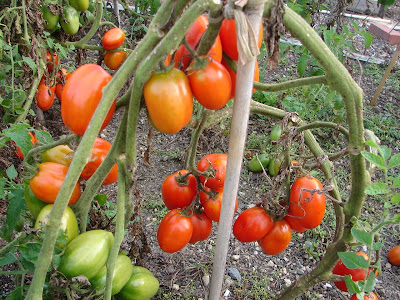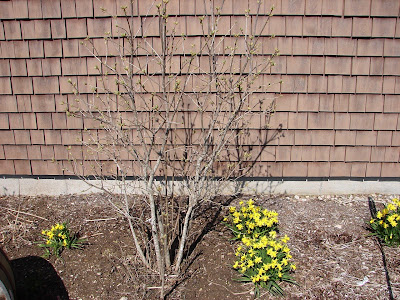

We usually don't grow a lot of beans at One Love Farm. For some reason, the rabbits love them. Actually, I think there is only one rabbit, down from dozens due to the local hawk and his extended family, but that's a story for another time. When the bean plants get to be about 3-4" high, the rabbit(s) come by and eat off all the leaves. They don't eat the stalks, mind you, just the leaves. This year I tried a little experiment. I planted 80' of beans and left them uncovered. Then I planted another 80' and covered them with bird netting. Sure enough, at 3", the uncovered plants were mowed down. I pulled them out and replanted with some extra tomato seedlings I had. Bad, bad year for tomatoes, but again, that's a story for another day.
The beans covered with the bird netting, however are doing great! The plants are vigorous and we now have beans ripening. You can see from the picture that we planted purple string beans. I've never grown them before and we'll let you know how they taste, but they are striking with their majestic color on the plant and I imagine they will be gorgeous on a plate.
The only drawback with this method of rabbit control is weeds. it is a bit of a pain to remove the bird netting, so weeding this area has been neglected. I weeded this bed two weeks ago and before I did so, it looked like I was growing an extrememly successful crop of grass. But after some back breaking work, being careful to leave the bean plants undisturbed, I saw rows of beautiful bean plants. Now if I can just figure out a way to keep the flea beatles off the arugula!































